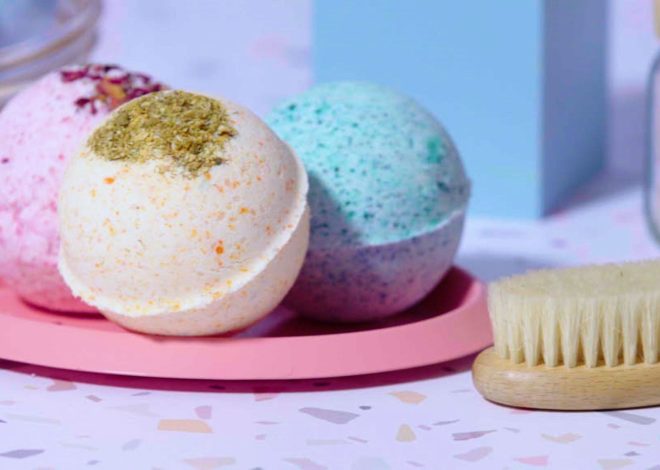
How to Give a Massage Mastering the Art of Healing Touch
Massage therapy is a timeless practice that has been used for centuries to promote relaxation, reduce stress, and alleviate muscle tension. Whether you’re a professional massage therapist or simply looking to provide soothing relief to a loved one, mastering the art of massage can be a rewarding skill. In this comprehensive guide, we’ll explore the techniques, tips, and benefits of giving a massage, helping you unlock the secrets of healing touch and create a blissful experience for the recipient.
The Fundamentals of Massage
Before diving into specific massage techniques, it’s essential to understand the basic principles of massage therapy. Massage involves the manipulation of soft tissues, including muscles, tendons, ligaments, and fascia, through various techniques such as stroking, kneading, and stretching. The goal of massage is to promote relaxation, improve circulation, and relieve tension in the body. By applying pressure and movement to the muscles and tissues, massage can help release knots, reduce pain, and enhance overall well-being.
Creating a Relaxing Environment
Creating a conducive environment is key to a successful massage experience. Choose a quiet, comfortable space free from distractions where both you and the recipient can relax and unwind. Dim the lights, play soft music, and consider using aromatherapy oils or candles to set the mood. Ensure that the temperature of the room is comfortable and that the massage surface, whether it’s a massage table or bed, is supportive and cushioned.
Preparing Yourself and the Recipient
Before beginning the massage, take a moment to center yourself and set positive intentions for the session. Approach the massage with an open heart and a compassionate mindset, focusing on providing healing and relaxation for the recipient. Communicate with the recipient to ensure that they are comfortable and have any specific preferences or concerns. Encourage them to take slow, deep breaths and let go of any tension or stress as they prepare to receive the massage.
Choosing the Right Massage Oil or Lotion
Selecting the right massage oil or lotion is essential for ensuring a smooth and enjoyable massage experience. Choose a product that provides adequate lubrication for your hands to glide over the skin without causing friction or discomfort. Consider using natural oils such as coconut oil, almond oil, or jojoba oil, which offer moisturizing and nourishing properties for the skin. Warm the oil or lotion between your hands before applying it to the recipient’s skin, ensuring that it’s at a comfortable temperature.
A Variety of Strokes and Movements
There are countless massage techniques to choose from, each offering unique benefits and sensations for the recipient. Experiment with a variety of strokes and movements to find what feels best for both you and the recipient. Some common massage techniques include:
- Effleurage: Gentle stroking movements that help warm up the muscles and promote relaxation.
- Petrissage: Kneading and squeezing motions that help release tension and improve circulation.
- Friction: Deep, circular movements that target specific areas of tension or pain.
- Compression: Applying pressure to specific points or areas to relieve muscle knots and trigger points.
- Stretching: Gentle stretching movements that help improve flexibility and range of motion in the muscles and joints.
Adjusting Pressure and Technique
Communication is key during a massage session, so be sure to check in with the recipient regularly to ensure that they’re comfortable and enjoying the experience. Pay attention to verbal and non-verbal cues, such as sighs of relief or tensing of muscles, and adjust your pressure and technique accordingly. If the recipient prefers more or less pressure, or if they have specific areas of tension or discomfort, tailor your approach to meet their needs and preferences.
Gentle Transitions
As the massage comes to an end, begin to transition out of the massage strokes gradually. Use gentle, calming movements to signal the conclusion of the session, such as slow, rhythmic strokes or light tapping motions. Encourage the recipient to take a few moments to rest and relax before getting up from the massage surface. Offer a warm towel or blanket to wrap around the recipient for added comfort and relaxation.
Reflecting on the Experience
After the massage session, take a moment to reflect on the experience and consider what went well and what could be improved for future sessions. Ask the recipient for feedback on their experience and any areas they particularly enjoyed or found beneficial. Use this feedback to continue refining your massage skills and enhancing the overall experience for both yourself and the recipient.
Embracing the Art of Healing Touch
Giving a massage is a powerful way to provide comfort, relaxation, and healing to yourself or others. By mastering the art of massage and honing your skills through practice and intention, you can create a deeply nurturing and rejuvenating experience that leaves the recipient feeling relaxed, renewed, and restored. Embrace the art of healing touch and unlock the transformative power of massage in your life and the lives of those you touch.


